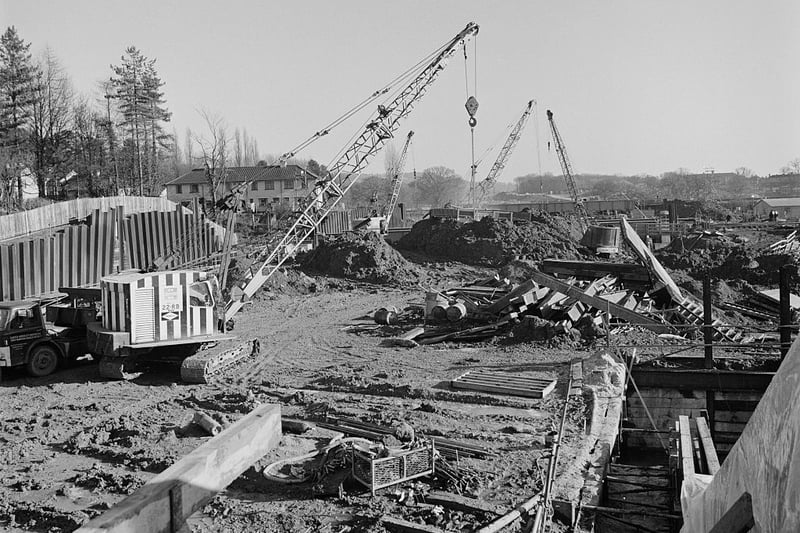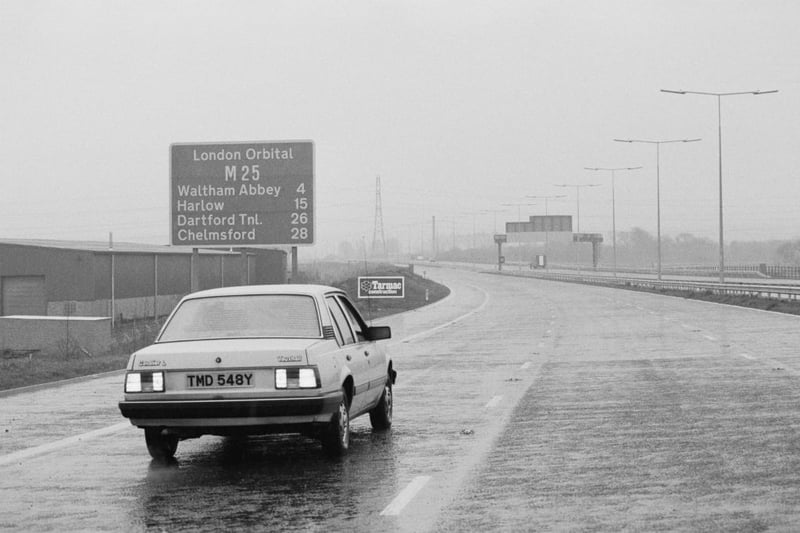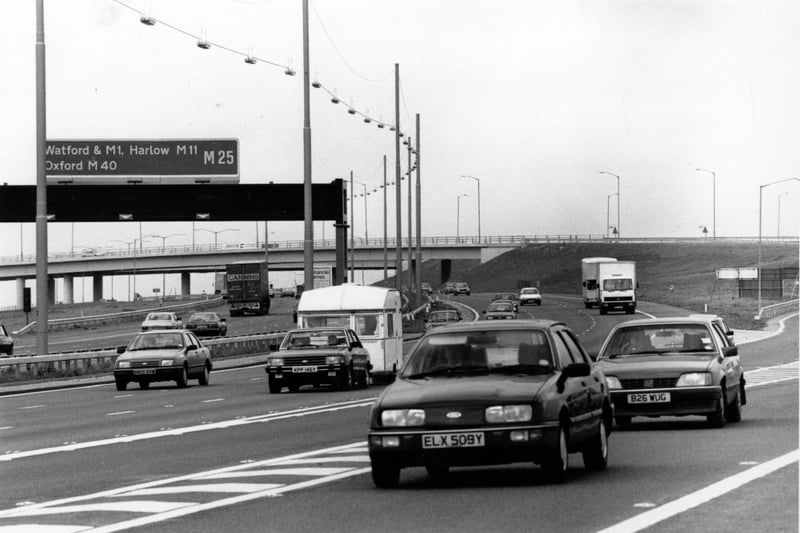The M25, or London Orbital Motorway, is a major ring road that encircles most of greater London and is one of the busiest motorways in the UK.
Margaret Thatcher opened the final section in 1986, making the M25 the longest ring road in Europe upon opening.
The M25 was first proposed in the Greater London Plan in 1944. The original plan foresaw a series of ring roads to alleviate traffic, but of the four proposed in the 1960s, only three of them were constructed: the London Inner Ring Road, the North and South Circular Roads, and the M25.
The M25 passes through five counties: Kent, Surrey, Buckinghamshire, Hertfordshire and Essex, as well as Greater London, and was built in a series of sections, with work beginning in 1975.
Overall the project took 11 years and used more than two million tonnes of concrete and 3.5 million tonnes of asphalt. Most of the motorway was initially unlit at night. The 188 kilometre (117 mile) motorway cost over £900 million at 1986 prices, more than £2.5 billion today.
However, the original three lane layout was soon unable to cope with the volume of traffic.
Officially called the London Orbital Motorway it was soon dubbed ‘Britain’s biggest car park’ and ‘the road to hell’ because of severe delays.
Over 200,000 vehicles a day use the M25 now, some 15% of all UK motorway traffic.
Since it opened there has been continual work to upgrade the motorway, adding extra lanes over large sections, and introducing new traffic management technology.
Now, for the first time since 1986, part of the M25 will be closed for an entire weekend. The five miles between junction 11 at Chertsey and junction 12 with the A3 will first be closed from 9pm on Friday March 15 until 6am on Monday March 18.
The National Highways said the action is necessary to enable a bridge to be demolished and a new gantry to be installed. The closure will be the first of five between now and September as part of a £317m project.
We’ve taken a look at the orbital motorway over the years from its construction to present day.

1. February 23 1973: Construction work in Surrey
Overall the project took 11 years and used more than two million tonnes of concrete and 3.5 million tonnes of asphalt. Most of the motorway was initially unlit at night.

2. May 11 1979: Residents from Enfield demonstrating against the proposed M25 Link Road.
The M25 was one of the first motorway projects to consider environmental concerns and almost 40 public inquiries took place.

3. January 24 1984: Car travelling on the M25
Margaret Thatcher opened the final section in 1986, making the M25 the longest ring road in Europe upon opening.

4. 1986: The southbound carriageway of the M25 close to Heathrow Airport.
The M25 passes through five counties: Kent, Surrey, Buckinghamshire, Hertfordshire and Essex
